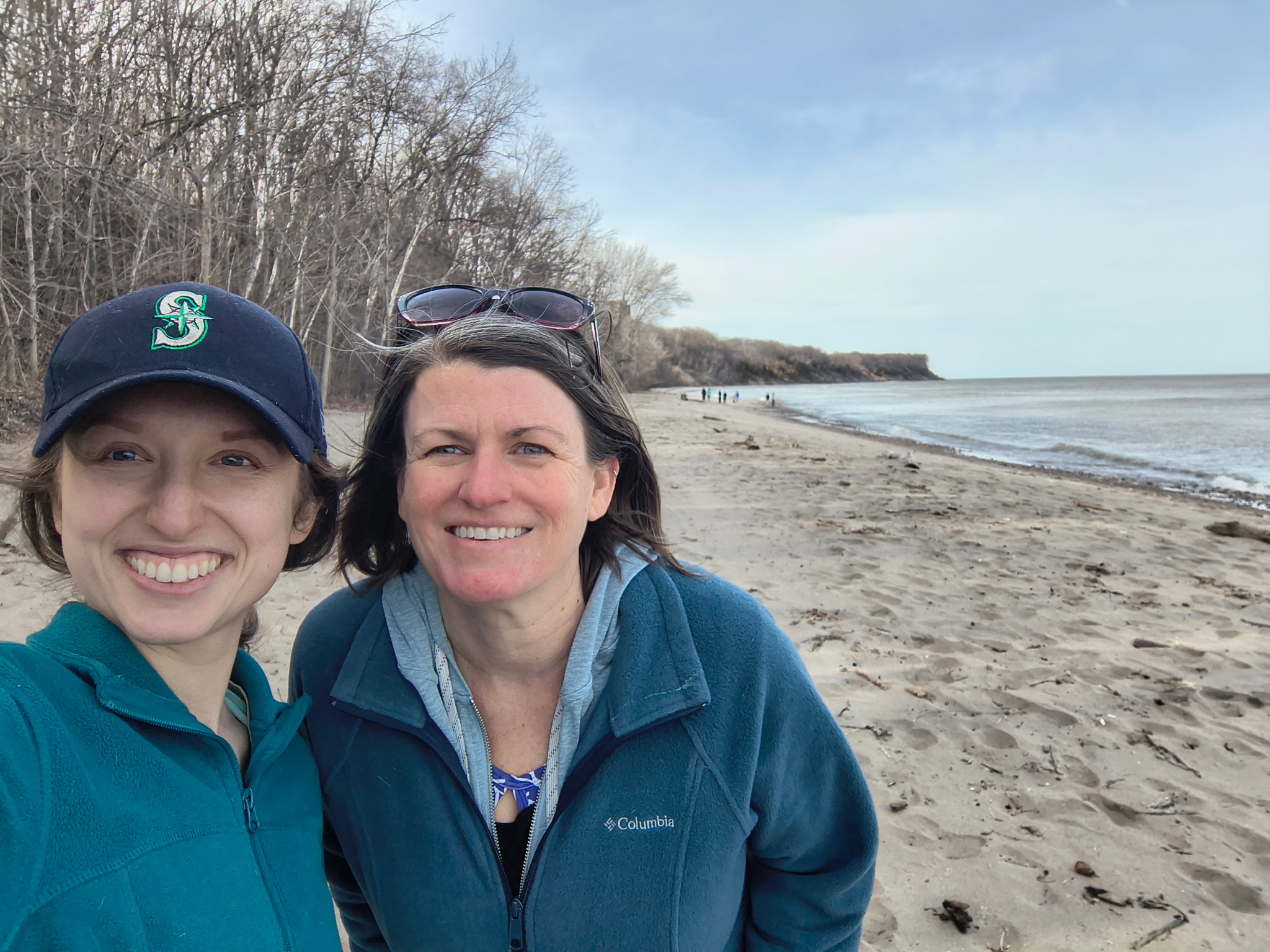Intense storms this fall breached a barge connection system in the Ashland, Wis., harbor, designed to protect the Northern States Power Superfund site. Soil and groundwater at the site are contaminated with tar, oil, metals and other chemical pollutants. The damage postponed cleanup efforts until next spring, providing more time and opportunity for the substances to spread. Research funded by Wisconsin Sea Grant could help prevent such weather-related damage and delays in the future.
“Chequamegon Bay is arguably the least-climate-adapted spot in the country from an infrastructure viewpoint,” said Randy Lehr, Bro Professor of Sustainable Regional Development at Northland College in Ashland, Wis. He explained that precipitation estimates for the Bayfield Peninsula developed decades ago are inaccurate because they don’t take into account the unique local weather situation caused by geography and Lake Superior.
“As we’ve learned more about how weather patterns set up around here, we were way off – 40 to 50 percent off on precipitation estimates on the lower side,” Lehr said. The area’s culverts, road crossings and ditches were all built based on these erroneous data.
Climate change compounds the situation even more. Chequamegon Bay is large and sits on the south shore of Lake Superior. “If climate change is going to have an impact anywhere, Chequamegon Bay will be that place,” Lehr said. “It’s shallow and will probably warm up the quickest, and there are anomalies with the way we’ve built out the land surrounding the bay.”
To help the area prepare for future conditions, which include increased temperature and rainfalls, Lehr and his team are developing computer models of the bay that focus on water circulation and the interactions between physical, chemical and biological processes. They are “ground-truthing” the models with measurements of temperature, nutrients, phosphorus, nitrogen, oxygen, etc., from area streams and 11 sampling sites in the bay.
In this first year of the two-year project, they are already learning surprising things. One is that the bay is diverse. “Each one of the 11 sites is different from the others,” Lehr said. “Even if we go to the same site over and over, it changes throughout the summer, and different sites change at different rates.”
Although not related to climate change, another surprise is a large eddy — sized more for an ocean than a lake, which the team found circulating between Madeline Island and the Bad River. Lehr said that researchers and park service personnel have often wondered why sediment plumes out of the Bad River take a hard left and hug the shore when most of the main currents travel the opposite direction.
“The eddy is so interesting that we plan to do some future simulations with existing funding we have,” said Lehr. “We plan to look for additional funds to do more comprehensive model simulations of how climate change may impact the eddy, and how any changes in the eddy might affect Chequamegon Bay or the Apostle Islands.”
Lehr expects the models developed through the Sea Grant project will be useful to fishery managers, engineers, researchers and city planners. The next steps are to build draft models based on the data collected and to analyze the species found in the plankton tows the team conducted this summer. Lehr hopes to have an understanding of all the data collected by spring so that he can refine the field sampling protocol for the next field season.
“Much of our modeling work, coordinated by Dr. Luke Van Roekel with Northland College, is basically downscaling ocean models for Lake Superior,” Lehr said. “We just don’t know that much about nearshore areas. The more we study them, the more important and interesting we find them. Nearshore areas are vital for productivity, so we need to know how future conditions might impact them.”





